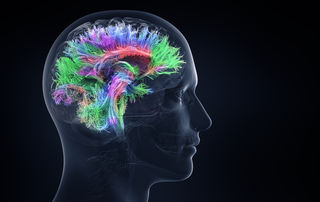Left Brain - Right Brain
How Some People Can Stay Sharp Even After Turning 95
The benefits of strong synchronization between the two halves of the brain.
Posted May 6, 2020 Reviewed by Gary Drevitch

Neuroscientists in Australia recently investigated the brain characteristics of dementia-free centenarians (95–103 years old) using resting-state fMRI neuroimaging. Their research question: "Is there something special about [centenarians'] brain functional connectivity that helps them preserve cognitive function into the eleventh decade of life?"
The researchers found that people over age 95 without dementia tend to have stronger "left brain-right brain" functional connectivity and more robust bilateral synchronization between brain hemispheres. This study (Jiang et al., 2020) was recently published online in NeuroImage.
"Stronger bilateral functional connectivity of the frontoparietal control network (FPCN) was associated with better cognition, especially in visuospatial domains," the authors stated. This pioneering research suggests that bilateral FPCN connectivity may be key to offsetting age-related cognitive decline in near-centenarians and centenarians.
This Australian-based study was led by Jiyang Jiang of the University of New South Wales in Sydney. Jiang is a postdoctoral research fellow at UNSW's Centre for Healthy Brain Ageing.
For this study, Jiang and colleagues compared a cohort of 57 dementia-free participants who were all older than 95 with over five dozen cognitively unimpaired younger participants between 76 and 79 years old: "[Our] findings suggest that, compared to young-old controls, centenarians showed more synchronized activation of left and right frontoparietal control networks," Jiang said in a news release. "In near-centenarians and centenarians, this coupled activation of bilateral frontoparietal control networks contributed to better performance on visuospatial cognitive tasks."
"This paper is a fine example of how the study of centenarians can reveal the secrets of healthy aging, and how the brain adapts to age-related changes and continues to perform so well in these exceptional individuals," co-author Perminder Sachdev added.
Low-Intensity Exercise May Strengthen Bilateral Frontoparietal Functional Connectivity
Although this recent UNSW study (2020) doesn't offer prescriptive advice on how to optimize the functional connectivity between brain hemispheres as we age, previous research (Schmitt et al., 2019) found that low-intensity exercise (e.g., walking) boosts functional connectivity between frontoparietal brain networks.
A study by Angelika Schmitt and colleagues at the University Hospital Bonn in Germany used resting-state fMRI to assess changes in brain connectivity after study participants walked or ran on a treadmill. Schmitt's findings on how physical exercise at different intensities influences functional connectivity were published in a special issue of the journal Brain Plasticity. (See "Brain Connectivity Fluctuates Based on Exercise Intensity")
"The frontoparietal network plays a fundamental role in attentional monitoring, cognitive processing, and higher-order motor control. Our data revealed an increase in resting-state functional connectivity after low-intensity exercise in the left and right frontoparietal network," Schmitt and her co-authors wrote. "It is highly interesting that the connectivity strength within the frontoparietal network was increased by physical exercise of low intensity."
Future research will investigate the underlying mechanisms that cause physical exercise to strengthen bilateral functional connectivity of the frontoparietal network and fine-tune the optimal "dose" (intensity/duration) of weekly activity needed to offset age-related cognitive decline.
Facebook image: Dan Negureanu/Shutterstock. LinkedIn image: Ivan Yang/Shutterstock.
References
Jiyang Jiang, Tao Liu, John D. Crawford, Nicole A. Kochan, Henry Brodaty, Perminder S. Sachdev, Wei Wen. "Stronger Bilateral Functional Connectivity of the Frontoparietal Control Network in Near-Centenarians and Centenarians Without Dementia." NeuroImage (First published online: April 14, 2020) DOI: 10.1016/j.neuroimage.2020.116855
Angelika Schmitt, Neeraj Upadhyay, Jason Anthony Martin, Sandra Rojas, Heiko Klaus Strüder, Henning Boecker. "Modulation of Distinct Intrinsic Resting State Brain Networks by Acute Exercise Bouts of Differing Intensity." Brain Plasticity (First published: December 26, 2019) DOI: 10.3233/BPL-190081


